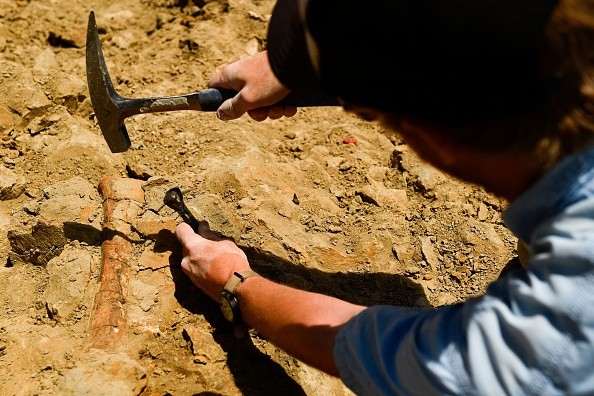According to research published today in the peer-reviewed Journal of Vertebrate Paleontology, a new species of one of the most identifiable types of dinosaurs is the oldest stegosaur ever discovered in Asia and one of the earliest ever discovered anywhere in the globe.
The stegosaur's remains, which included bones from the back, shoulder, thigh, feet, and ribs, as well as several armor plates, date to the Middle Jurassic period's Bajocian stage, which is much earlier than most known stegosaurs.
The greatest discovery of stegosaurs

According to the Journal of Vertebrate Paleontology article, Bashanosaurus primitivus is the earliest record of Stegosauria in Asia and one of the earliest occurrences of this clade anywhere in the globe.
Geochronological evidence and analysis suggest a Middle Jurassic (Bajocian) age for the Shaximiao Formation near Pu'an Township, China. As per UPI.
According to the study, Bashanosaurus primitivus lived on Earth approximately 168 million years ago during the Middle Jurassic period.
It had a thinner and less developed shoulder blade, narrower and thicker armor plate bases, and other characteristics that distinguish it from all other Middle Jurassic stegosaurs identified thus far.
It does, however, have characteristics with some of the first armored dinosaurs, which lived over 20 million years ago.
All of these characteristics, according to Dr. Dai Hui of the Chongqing Bureau of Geological and Mineral Resource Exploration and Development, are pointers to the stegosaurs' position on the dinosaur family tree. Bashanosaurus is distinct from other Middle Jurassic stegosaurs and is certainly a unique species. As per ScienceDaily.
Stegosaurs were four-legged, plant-eating dinosaurs that lived throughout the Jurassic and early Cretaceous eras.
They were easily identified by their massive backplates, long-tail spikes, and diminutive skull. Stegosaur fossils have been discovered on all continents except Antarctica and Australia, and 14 stegosaur species have been recognized thus far.
Huayangosaurus (one of the most ancient stegosaurs), Gigantspinosaurus (notable for its huge shoulder spines), and Miragaia (notable for its exceptionally long neck) are all members of Stegosauria.
The fragmented fossil evidence, on the other hand, has hampered attempts to comprehend how the stegosaurs developed and how they relate to one another.
The unique features of the stegosaurs
The discovery of this new species has begun to shed light on the riddle. Bashanosaurus primitivus has some basic characteristics with the earliest stegosaurs such as Huayangosaurus and Gigantspinosaurus, as well as early-branching thyreophorans (armored dinosaurs).
These include taller tail vertebrae, a smaller and flared shoulder blade, and traits of the back vertebrae that are comparable to the Early Jurassic armoured dinosaur Scelidosaurus.
Bashanosaurus' fossilized remnants also show a number of characteristics that set it apart from other known stegosaurs.
According to the research article, based on the hindlimb size of Bashanosaurus primitivus, we estimate its total length is about 2.8 m.
It is conceivable that this small size indicates that the holotype is a subadult, an implication backed by a lack of fusion between scapula and coracoid and the tibia and fibula. A fusion between these elements is seen in adults but not in juveniles of Stegosaurus.
© 2025 NatureWorldNews.com All rights reserved. Do not reproduce without permission.





